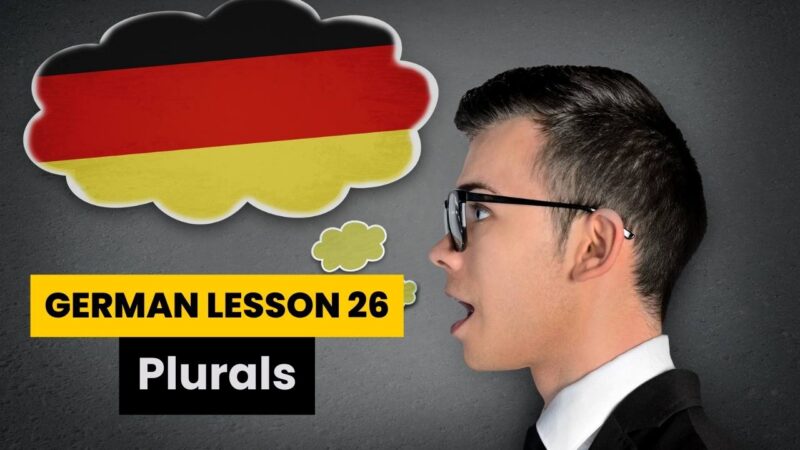Want to learn German or want to learn something quickly you can definitely use in Germany? Learn how to turn nouns into plurals!
In this quick and easy lesson, you’ll learn six tips and tricks to learn the plural of about 80% of German words within ten minutes.
Sound good? Let’s start!
Love Germany? Click here to download your free guide to 25 Incredible Things You Must Do In Germany In Your Lifetime. You won’t want to miss them!

Plurals are a basic and necessary part of learning German. The good news is that there are some hacks you can do in German to learn most plurals easily.
Watch the video below to learn these tips and tricks. Below the video, you’ll find a summary of the video to help you remember and practice.
You can do this!
Here’s a summary of what you’ve learned in the video.
Tip 1: Nouns ending with ‘E’
- Almost 100% of these nouns form plurals by adding ‘N’.
- Example: Die Blume (flower) becomes die Blumen (flowers).
Tip 2: Masculine nouns
- Add ‘E’ to form plurals for around 90% of masculine nouns.
- Example: Der Tisch (table) becomes die Tische (tables).
Tip 3: Feminine nouns
- Add ‘N’ or ‘EN’ to form plurals for around 90% of feminine nouns.
- Example: Die Frau (woman) becomes die Frauen (women).
Tip 4: Neuter nouns
- Add ‘ER’ to form plurals for around 80% of neuter nouns.
- Example: Das Kind (child) becomes die Kinder (children).
Tip 5: Nouns ending with ER, EN, EL, or diminutives
- These nouns generally do not change in the plural form.
- Example: Das Mädchen (girl) stays die Mädchen (girls).
Tip 6: Non-German origin nouns, abbreviations, and nouns ending with O, A, or UM
- Add ‘S’ to form plurals.
- Example: Das Auto (car) becomes die Autos (cars).
Bonus Tip: Umlauts in Plurals
- Many plurals in German include umlauts (ä, ö, ü).
- Examples: Das Haus (house) becomes die Häuser (houses), Der Vogel (bird) becomes die Vögel (birds).
General Advice:
- Always learn new nouns together with their plural forms to ease memorization.
- Practice forming plurals with questions like “Wie viele?” (How many?).
Time to practise until you have a grasp on how to form nouns. 🙂
Want to learn more German? Find the previous lesson here. You can also find all our lessons here.

